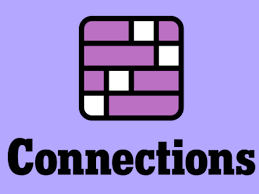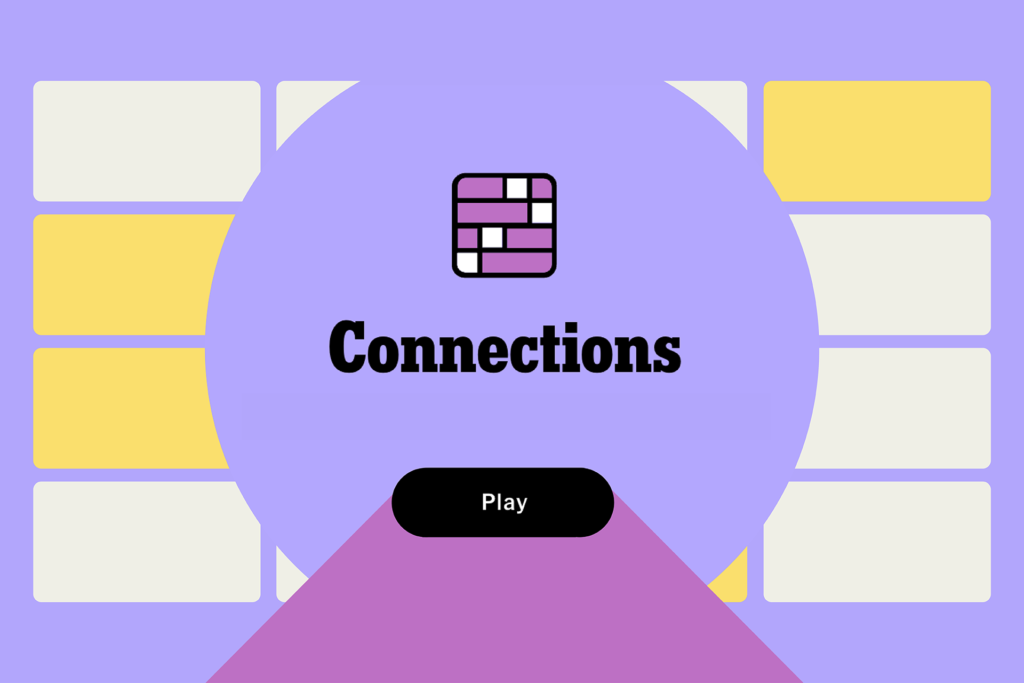
Have you ever found yourself deep in thought, connecting the dots between seemingly unrelated things? If you’re like many people, you might enjoy the process of linking ideas, facts, or clues together. But what if you could put that mental skill to the test in a fun and interactive way? That’s exactly what the New York Times (NYT) did with its game connections nyt, which has become a phenomenon for puzzle lovers and casual gamers alike. But what makes this game so addictive, and why has it captivated so many players?
What is “Connections” and Why Is It So Popular?
The NYT’s Connections game is more than just a puzzle; it’s a challenge for your mind. Similar to word association games, Connections presents players with a list of 16 words that can be grouped into four distinct categories. Your goal is to sort the words into these categories by figuring out their connections nyt to one another. It’s a game of logic, strategy, and memory, where each decision can lead to new discoveries and victories—or frustrating dead ends.
The simplicity of the game is what draws many people in. At first glance, it might seem like a straightforward task, but as players begin to organize the words into their respective groups, they quickly realize that the game requires not only knowledge but also creativity. The categories can be abstract, sometimes having nothing to do with the words’ literal meanings but rather connections based on theme, culture, or association. This element of unpredictability is what keeps players coming back for more.
A Perfect Fit for Puzzle Lovers
For those who have a passion for puzzles and problem-solving, connections nyt is like an invitation to a mental workout. The game’s difficulty increases as players progress, testing their ability to think critically, recognize patterns, and make connections across various fields of knowledge. Whether you’re a seasoned puzzle enthusiast or a casual player looking for a fun distraction, the game offers just the right balance of challenge and enjoyment.
There’s something incredibly satisfying about cracking the code behind each puzzle. Each time a player successfully groups a set of words together, there’s a sense of accomplishment that makes the game feel even more rewarding. And, of course, there’s the added incentive to beat your best time or share your success with friends. This competitive aspect creates a sense of community among players, encouraging them to keep playing and improving.

The Role of the New York Times in the Puzzle Landscape
The New York Times has long been a staple of American culture, especially when it comes to intellectual pursuits. Known for its rigorous reporting and thoughtful editorial pieces, the NYT has also developed a reputation for its high-quality puzzles. The New York Times Crossword, in particular, has a dedicated following that has grown over decades. It’s no surprise, then, that the NYT decided to dive into the world of casual gaming with connections nyt.
By introducing connections nyt, the NYT has managed to bring together two seemingly different worlds: traditional print media and modern online gaming. The game fits seamlessly into the NYT’s brand, offering a fun and engaging way for people to test their minds while staying connected to the trusted institution. This strategy has not only expanded the NYT’s reach but also provided a fresh outlet for its audience to engage with its content in an interactive way.
How Does Connections Help Improve Cognitive Skills?
There’s more to Connections than just entertainment; it also offers players a way to sharpen their cognitive skills. As people sort through the words, they are exercising their ability to identify patterns, think critically, and recall information. Studies have shown that games like Connections, which challenge the brain and require complex problem-solving, can help enhance memory, improve focus, and even boost creativity.
Additionally, the game encourages players to expand their knowledge across a wide range of topics. Since the words in each puzzle can be linked to anything from geography to pop culture to history, players may find themselves learning something new with every game they play. This constant exposure to new information helps stimulate the brain, keeping it active and engaged.
Why connections nyt is a Hit with Social Media Users
In today’s digital age, social media is a powerful tool for spreading trends and ideas. connections nyt has not only thrived in the app and online gaming spaces but has also taken over social media platforms like Twitter, Instagram, and Facebook. Players share their success, challenge friends to beat their scores, and even post tips on how to approach difficult puzzles. This online sharing has helped create a vibrant community around the game, further fueling its popularity.
Social media also allows people to compare their strategies and discuss different ways to approach each puzzle. This sense of camaraderie adds an extra layer of fun to the experience. It’s one thing to solve a puzzle on your own, but it’s another to celebrate your victory with a community that appreciates the challenge. Whether through hashtags or game-specific groups, connections nyt has fostered a space where players can share their love for the game and bond over a shared passion for problem-solving.

How to Play Connections: Tips and Tricks for Success
If you’re just getting started with connections nyt, you might be wondering how to improve your chances of success. Here are a few tips to help you sharpen your skills and make the most out of your experience:
- Start with the Easy Groups: Some words are easier to group together than others. Start by identifying the most obvious connections first, and use them to build a foundation. Once you have a few categories in place, the rest of the puzzle will often fall into place more easily.
- Look for Hidden Connections: Sometimes, the most challenging part of Connections is figuring out the more abstract links between words. Keep an open mind and be willing to consider less obvious connections. It might help to think about categories like “things you would find at a zoo” or “words related to food.”
- Don’t Be Afraid to Make Mistakes: If you get stuck, it’s okay to make a wrong move. In fact, making mistakes is a great way to learn. Each time you guess incorrectly, you’re narrowing down your options and getting closer to solving the puzzle.
- Practice Makes Perfect: Like any game, practice is key. The more you play Connections, the better you’ll get at recognizing patterns and connections between words. Over time, you’ll become more adept at solving puzzles quickly and efficiently.
The Future of connections nyt and Puzzle Gaming
So, what does the future hold for connections nyt? Given its success and the increasing popularity of online games that challenge cognitive abilities, it’s likely that we’ll see more games like connections nyt in the future. Whether it’s expanding the variety of puzzles, adding new features, or creating new ways to interact with friends, the NYT’s Connections game is well-positioned to remain a favorite among puzzle fans for years to come.
As digital gaming continues to evolve, there will always be a demand for games that engage the mind while providing fun and entertainment. Connections is proof that the best games are those that not only entertain but also make us think, learn, and grow. And who knows? Maybe the next big puzzle sensation will come from the same innovative minds behind connections nyt.
Conclusion: Why You Should Try Connections
Whether you’re a lifelong puzzle fan or someone looking for a new challenge, connections nyt offers an exciting and intellectually stimulating way to pass the time. Its blend of simplicity and complexity, combined with its ability to help improve cognitive skills, makes it a standout in the world of online games. If you haven’t tried it yet, what are you waiting for? Dive into the world of connections nyt and see how many puzzles you can solve. Your brain will thank you!


